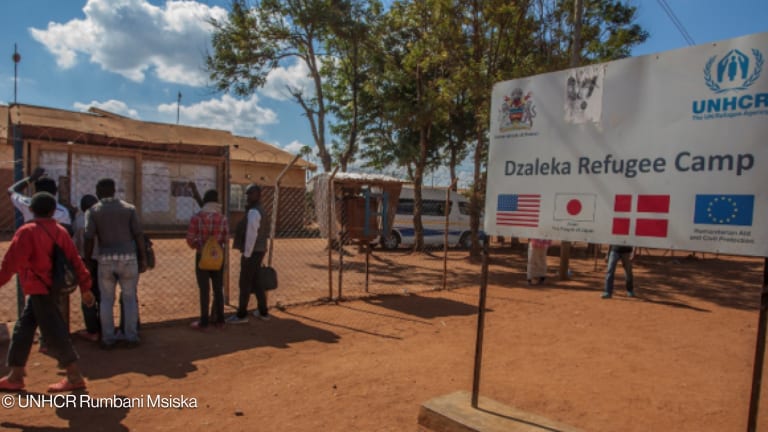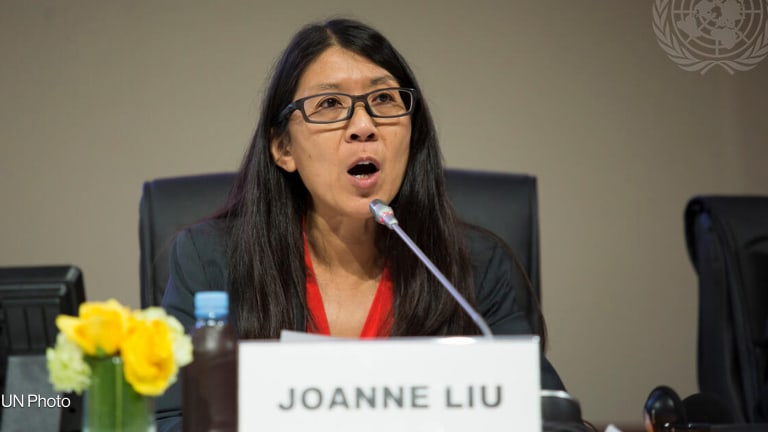
NEW YORK — A new initiative backed by the United Nations could foster much-needed coordination on internally displaced people, but the multistakeholder work — not backed by official funding — will still largely depend on national governments to take the lead.
Impacted by everything from conflict to climate change, IDPs have long been sidelined by humanitarian aid and development projects and frameworks. No one single U.N. agency, convention or international body is tasked with their protection. And the new U.N. global compacts on migration and refugees do not specifically mention them.
More than 30 million people were internally displaced in 2017, report shows
Natural disasters topped conflict as the primary source of displacement, according to the Norwegian Refugee Council and the International Displacement Monitoring Centre.
“This is an opportunity to really shine the light on dozens of millions of people that are often left behind, the most vulnerable during a humanitarian crisis, and then after the crises are left stranded without development support,” said Jane Backhurst, a senior adviser on humanitarian policy and advocacy at Christian Aid, which has been consulting on the plan of action work.
The new plan of action recognizing that more is needed to address the needs of IDPs was finalized in April. It marks the 20th anniversary of the U.N.’s Guiding Principles on Internal Displacement, established at a time when only about 5 million people were reported as internally displaced.
“There's a recognition among us that IDPs aren't getting the attention they deserve. It is a complex issue, but it's also because perhaps we haven't been working strategically enough together,” explained Elizabeth Eyster, chief of the IDPs section at the United Nations High Commissioner for Refugees. “It’s really about putting governments in the driver's seat and letting them lead the process.”
While estimates vary, the U.N. has reported that there were approximately 40 million people internally displaced by conflict and violence in 2016, while an additional 24 million people were displaced by natural disasters.
The number of people internally displaced by climate change outpaced those uprooted by conflict last year, the International Displacement Monitoring Centre and Norwegian Refugee Council reported.
The upward trend could result in 143 million people internally displaced by 2050, according to the plan of action.
“You will see in many contexts that either there are huge gaps in the response, because there is not enough to cover the crisis, or there are overlaps between different agencies,” said Alexandra Bilak, the director of IDMC. “Now, at the international level, the point that we're at ... is really a glaring lack of leadership at the global level … that kind of agenda has been spread among lots of different actors.”
“One reason we're not doing enough is we're not pulling together as a community. We really need to be hearing from the states where they see their obstacles.”
— Elizabeth Eyster, chief of the UNHCR IDPs section“There aren't any official forums within which this is being discussed. We regularly come together as IDP experts, but we're not really sure who we should be making these recommendations to.”
The GP20, as it is known, spells out four priority issues in trying to reduce the numbers of IDPs: Participation of IDPs; national laws and policies addressing displacement; better data and analysis; and long-term solutions for protracted displacement.
Countries on board could look to the GP20 and identify specific initiatives or objectives they want to take on, using the framework as a launching point. Some proposed objectives in the plan include expanding and implementing national laws and policies on internal displacement and increase the number of stakeholders collecting and using data on internal displacement.
Most countries do not have a specific government agency to systematically collect and share data, according to the Norwegian Refugee Council. And existing datasets are often incomplete, complicated by challenges such as identifying who qualifies as an IDP, and how long this status persists across generations, for example.
“It's not neat and clean, where we have a convention to sort of determine the status of an individual. In the IDP world, you're less focused on determining an individual status,” Eyster said. “So it is true that you have countries that have had IDPs at the level of 6 million for 10 or 20 years and you start to question are these individuals still IDPs?”
“One reason we're not doing enough is we're not pulling together as a community. We really need to be hearing from the states where they see their obstacles.”
IDPs contexts in individual countries vary greatly, ranging from situations in Syria, where there is a limited government willingness to protect IDPs, to Niger, which lacks the capacity, not the will, to assist, according to Nadine Walicki, the GP20 coordinator at UNHCR. Colombia has been undertaking work to include representatives of their long-standing IDP population — more than 7 million, the largest in the world — in peace discussions.
“It would be really that people at the national level would see it as an opportunity and agree that more needs to be done, and then step up their efforts in a way that makes the best sense for them in their context,” said Walicki.
Even with the GP20 in its early stages, it signals a crucial step in the right direction for long-time IDPs experts such as Walicki.
“I have been working on internal displacement for 13 years and this is the first time I have seen such a multistakeholder effort,” she explained. “It's the first one I'm aware of that goes beyond just a humanitarian focus. It includes development and peace-building entities, and we're trying to include more key actors as well. We're also including the member states very much from the get go.”
It’s also the first known effort to “crossfertilize” discussions on different types of displacement, according to Walicki.
“This is the first ever such effort where we're not only talking about conflict displacement, but wanting to broaden the discussion to any cause of internal displacement . This is a real divide and it's just the natural way it has evolved,” she continued.
The first steering group meeting — including UNHCR, the U.N. Development Programme, Danish Refugee Council and other international NGOs — will take place at the beginning of July in Geneva. Member states are also expected to attend, but no state has formally committed so far.
Actual implementation of the plan at the country level will be key to its success.
“How it is going to get implemented I think is still being sorted out, and who is actually responsible for monitoring progress for me, personally, is still not very clear,” Bilak said. “Now it's just a question … of consolidation and coming together to share experiences, to say, ‘this is what we've done, these are the countries that could be interested.’ And then it's up to … those countries to take it forward.”








